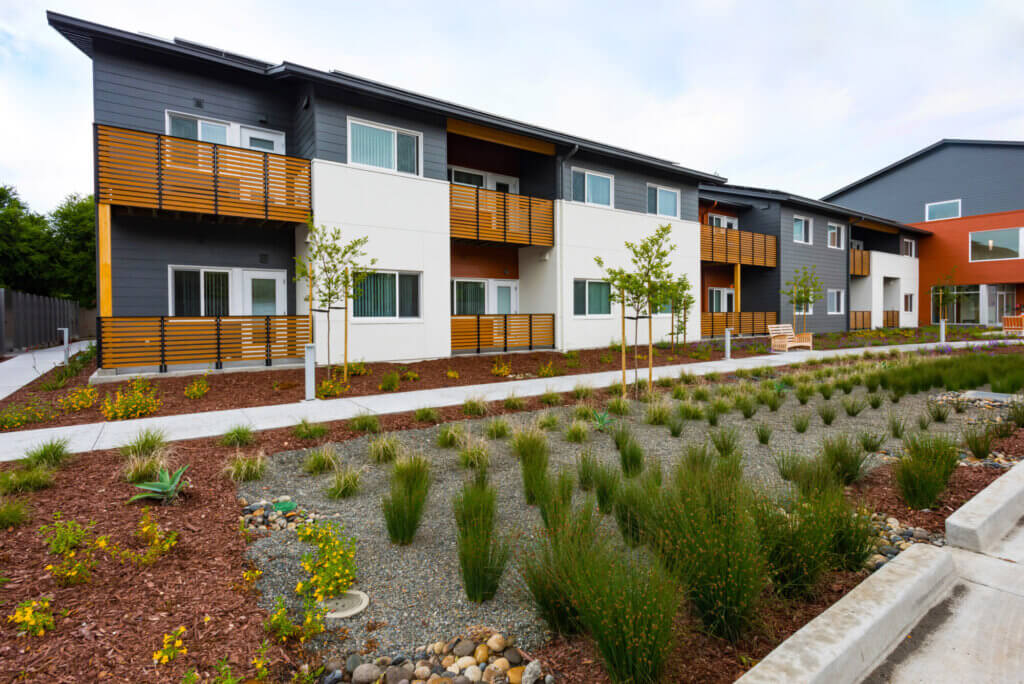Will the Federal Government Enact Land Use Reforms in 2024? A Look at What May Lie Ahead
Published On February 8, 2024
Author: Ben Metcalf
The past several years has seen a flurry of state legislation tackling the housing crisis by overriding local land use requirements in order to make it easier to build housing at higher densities, in more places, and with increased certainty. California has been at the forefront of this since its 2017 housing legislative package, which bundled together land use reforms with subsidies for affordable housing. But this trend is not unique to blue states; land use and regulatory reform has been one of those rare issues attracting bipartisan support. Meaningful reforms moved forward last year in states ranging from Montana and Arizona to Maine and Texas. Even in legislatures held by a single party, key land use bills have almost always only succeeded because of crossover votes on key committees or on the floor. So does this suggest land use reform might become possible in the highly partisan environment of the U.S. Congress in the next year?
Historically, land use decisions have been decided locally and have received scant attention from Washington D.C. But in the last few years, some cracks in this conventional wisdom have appeared. Most conspicuously has been recent support from the appropriations committees of both houses to fund the Biden Administration’s PRO Housing program, which provides grants to localities to spur zoning reform. Motivating this federal effort is a sense that housing affordability has become an issue that cuts across rural and urban areas and spans the breadth of the country. Concerns around housing affordability have also driven policymakers to renew their support for a more traditional form of federal intervention on housing: the Low-Income Housing Tax Credit program. The Affordable Housing Credit Improvement Act (AHCIA), a tax bill which aims to boost construction of homes for low-income households, now has the support of over a third of Congress—172 representatives and 30 senators, evenly divided between Republicans and Democrats. And in January, several key AHCIA provisions were pulled into a broader bipartisan tax package approved by the House of Representatives that is currently being considered by the Senate.
In addition, there are a handful of recently-introduced bills, advanced by Democrats and/or Republicans in both chambers, that suggest increased federal engagement on land use reform. These include:
- Introduced in 2021 by Representative Peters (D), the Build Housing Near Transit Act (H.R.2483) would require the Department of Housing and Urban Development (HUD) and the Department of Transportation (DOT) to coordinate to coordinate and adjust funding formulas for DOT’s Capital Investment Grants to prioritize applications that highlight land use reforms allowing more housing near transit. The bill directs HUD and DOT to prioritize policies such as reducing parking minimums, minimum lot sizes, and by-right zoning approvals (see Terner Center’s recent report and transportation and housing alignment here).
- Introduced in 2023 by Senator Todd (R), the YIMBY Act (S.1614) would require local governments that receive a HUD Community Development Block Grant (CDBG) to submit to HUD information regarding their implementation of certain land-use policies, such as policies that aim to expand high-density single-family and multifamily zoning.
- Introduced in 2023 by Representative Garcia (D), People Over Parking Act (H.R.3145) aims to eliminate local governmental zoning rules that mandate a minimum number of parking spaces for affordable residential, retail, industrial, and commercial construction (see Terner Center’s past work on California parking reform efforts here)
- Introduced in 2022 by Senator Lee (R), the HOUSES Act (S.4062) would authorize the sale of certain federal land to states and local governments for housing, as long as the development achieves a certain minimum level of residential density.
While these bills could have promise for housing supply and affordability, it’s not yet clear that any of them are on track to become law in 2024. The current Congress has passed little legislation, sending only 27 bills to the President over the past 13 months, and there is no indication that that dynamic will change in the near future. Indeed there is a risk that the bipartisan nature of land use reform could be lost if it becomes too visible during the 2024 campaign season. While the Trump campaign has signaled its support for land use deregulation, its position papers also argue for preserving neighborhoods zoned for single-family-only housing s. These two positions can be hard to reconcile since single-family-only zoning complicates efforts to build denser, more affordable, and more integrated communities. Republican sponsors of land use reform bills could be in a precarious position if the topic of single-family zoning is taken up directly by Donald Trump or his surrogates on the campaign trail. But for the time being, the increasingly visible debate on land use reform in Washington is giving political cover for HUD in administering the PRO Housing program and its broader efforts to provide technical assistance to state-level local practitioners and advocates.
These federal efforts are also aided by an increasingly visible body of research, advanced in the last several years by a diverse range of research institutions including the Terner Center, which finds that land use reforms hold potential to stimulate housing supply. This research suggests reforms not only increase overall housing production but can also be helpful to unlock lower-priced housing (for example, an accessory dwelling unit added to the lot of a single-family home may be more likely to rent or sell at a lower rates) and add homes in higher-opportunity places that offer beneficial to economic mobility of residents (for example, allowing faith-based organizations to build multifamily housing on land that they own can open otherwise exclusive single-family communities). However, there’s still much we don’t know, particularly as policymakers apply relatively nascent interventions to new contexts across the country. The federal government can advance this work by spotlighting and investing research funds in a range of promising projects and research collaborations to better understand the impacts of different policy choices. The National Zoning Atlas’ efforts to digitize every city’s land use requirements and Terner’s Housing Simulator, which is working to model the efficacy of different housing reforms in different locations, are two such efforts.
Getting anything done on housing in Congress during an election year will be a challenge but increasingly visible efforts to address housing affordability through land use reforms can create momentum leading to meaningful change. While the political environment in D.C. continues to evolve, there is still much to do to ensure that momentum at the state and federal levels continues in 2025 and beyond.
This blog post solely reflects the views of the author and does not represent the position of the Terner Center for Housing Innovation, UCBerkeley, or its funders.





